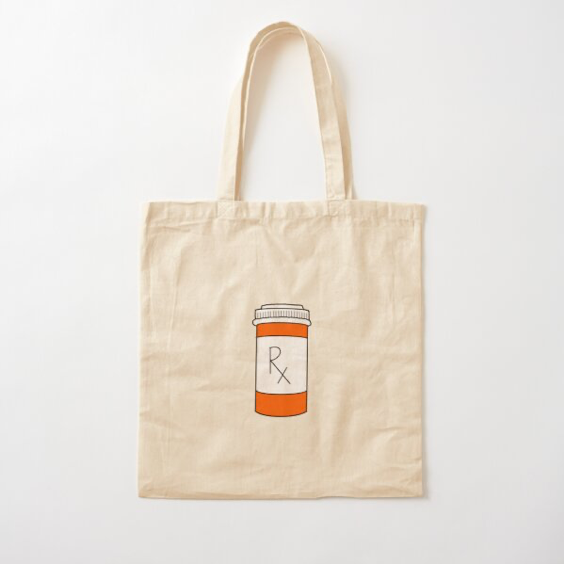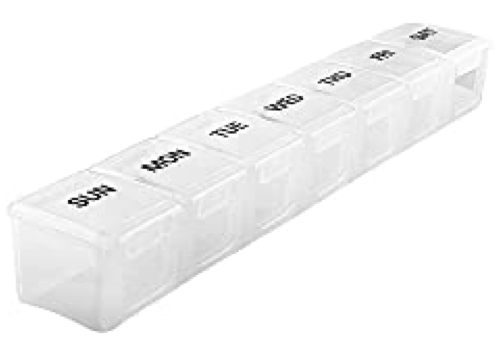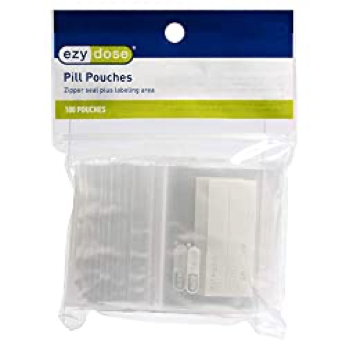Taking prescription meds overseas? Here are ten suggestions on how to best travel with drugs (plus a bonus tip on weed).

1. Keep Medicines in Their Original Bottles
While it’s unlikely you’ll face any sort of issue when you’re flying with meds, you may want to keep your pills in the original bottle—complete with the sticker on the front with your name and doctor’s name—as an extra safety precaution.
If your original prescription bottle is too large, ask your pharmacist if he or she can give you a smaller labelled-with-the-Rx bottle for you to fill up.
2. Bring a Note from Your Doctor
Again, it’s unlikely you’ll get stopped at customs or border control because you’re carrying a few weeks’ worth of medicine. However, having an official prescription on hand is never a bad idea. Take a photo of it with your phone, so you’ll have it handy.
3. Learn the Laws Around Traveling Internationally with Medications
The U.S. Department of State recommends storing medications in their original labeled containers and bringing a copy of a doctor’s letter to show customs officers and other officials if asked. The prescription should note the brand and generic name of the drug.
If you’re taking an unusual drug or one that contains narcotics such as sedatives, carry a note from your doctor explaining what the medication is and why you need it.
Note: Some over-the-counter drugs legal in the U.S. may be illegal elsewhere. For example, Aleve (active ingredient: Naproxen) is only available via prescription in certain EU countries . Always double-check before you fly.
4. Exercise Caution with Herbal Medicines
Flying with herbal medicines or supplements to international destinations can be tricky as each country has its own laws about what’s allowed in. To find out what may be restricted in the countries you’ll be visiting or transiting through, refer to the embassy website or contact local consulates.
Make sure herbal remedies and Ayurvedic medicines are in clearly labeled, well-sealed containers, preferably in original bottles. It may be helpful to bring a doctor’s note explaining your remedies’ intended uses.
5. Always Pack Medicine in Your Carry-On
Keep meds in your carry-on. Some aircraft cargo holds are not climate-controlled, which may affect temperature-sensitive medications. And if your checked bag gets lost, you don’t want the hassle of getting a replacement.
Don’t worry about flying with meds that must be refrigerated (ex: insulin). TSA regulations allow frozen gel-cooling packs through security.
Liquid medications (prescription or over-the-counter, like saline solution or eye drops) aren’t subject to TSA three-ounce limits. You do have to declare them to security officers and present them for inspection.
You may also travel with accompanying items, such as IV bags, pumps, and syringes, as long as they’re declared before you begin the screening process. All of these items will be X-rayed unless you request a manual inspection.
Note: Many people who don’t want to carry Rx bottles pack their meds and vitamins in weekly organizers like this one ($6):

Not me! They take up too much space and open too easily, even when sealed in a Ziplock. Instead, I use pill bags ($5/100), one per day.

If you’re worried about remembering whether you took that day’s dose, you can write the date on each bag.
6. Bring Extra Medication
My doc friend recommends bringing twice the amount of medicine you need. Put half in your carry-on and half in your personal item. Why? Theft and flight troubles. If your bag gets pinched or a hurricane hits and your return flight is delayed by a week, you won’t be without your meds.
7. Exercise Caution When Flying with Narcotics
If you’re traveling with any type of prescribed narcotic used to relieve pain, such as Vicodin, Oxycontin, Percocet, or codeine, bring a copy of your prescription. Though not required by the TSA, it may prove helpful when getting through security. (As these types of drugs are widely abused, even though it isn’t their jurisdiction, security screeners may be suspicious if they are unaccompanied by the proper paperwork.)
You may also want to travel with phone numbers for your pharmacy and prescribing doctor. This may seem like an unnecessary hassle, but it could prevent delays and other problems at the airport.
8. Be Strategic About What You Bring
If your carry-on is bursting at the seams with drugs (OTC and prescribed), be strategic. Give priority to meds that are vital to your functioning or survival. (Ex: asthma inhalers, insulin, anti-seizure meds, blood pressure meds, meds with rebound or withdrawal symptoms if they’re suddenly halted). A trip overseas is not a good time to find out how you function without your arthritis or anti-anxiety prescriptions.
9. Consider Travel Insurance
Many factors influence whether you should purchase travel insurance. If you’re concerned about losing your meds and the cost and hassle of replacing them while traveling, you may want to check out coverage options.
10. Plan Ahead for Time Zone Changes
If you have to take medicine at a certain time of day and will be switching time zones, plan ahead. Create a medical itinerary that runs parallel to your day-to-day travel itinerary, so you can take your meds at the time your body is used to.
Bonus Tip: When it Comes to Weed, Just Say No
With thirty-six states now allowing some form of medical marijuana, it may seem traveling with the stuff should be easy enough. Not true.
Vis-à-vis domestic travel, there’s a difference between state governments and the feds. Federal law still classifies marijuana, even medical marijuana, as a Schedule I controlled substance, which means anyone transporting it across state lines is committing a federal crime and can be charged with drug trafficking. (Federal law does not distinguish between medical marijuana and non-medical marijuana.)
Per the TSA website, TSA officers do not search for marijuana or other illegal drugs, but if they do find them, they’re required by federal law to turn them and the owner over to local law enforcement. Note: The TSA does allow travelers to carry products like Cannabidiol oil that contain less than 0.3 percent THC in their checked or carry-on (the latter subject to the four-ounce rule).
Even if you get your stash past the TSA, many carriers, including Delta Air Lines, Alaska Airlines and American Airlines ban marijuana, including medical marijuana (THC), from their aircraft, even if you have a medical card. Ditto Amtrak and Greyhound.
When it comes to international travel, if your stash is found during a search at a border or custom checkpoint, the local attitudes and laws toward cannabis will dictate the outcome. In weed-friendly places like the Balkans or the Netherlands, you may have no problem at all. But under the wrong circumstances, things can go “Midnight Express” real fast, including long jail sentences or even execution for trafficking large amounts. When it comes to overseas trips, avoid the risk and, if you must, find weed at your destination.
Twist’s Take: Follow these ten suggestions to make traveling overseas with medication easier. And leave the weed (even the medicinal kind) at home.
